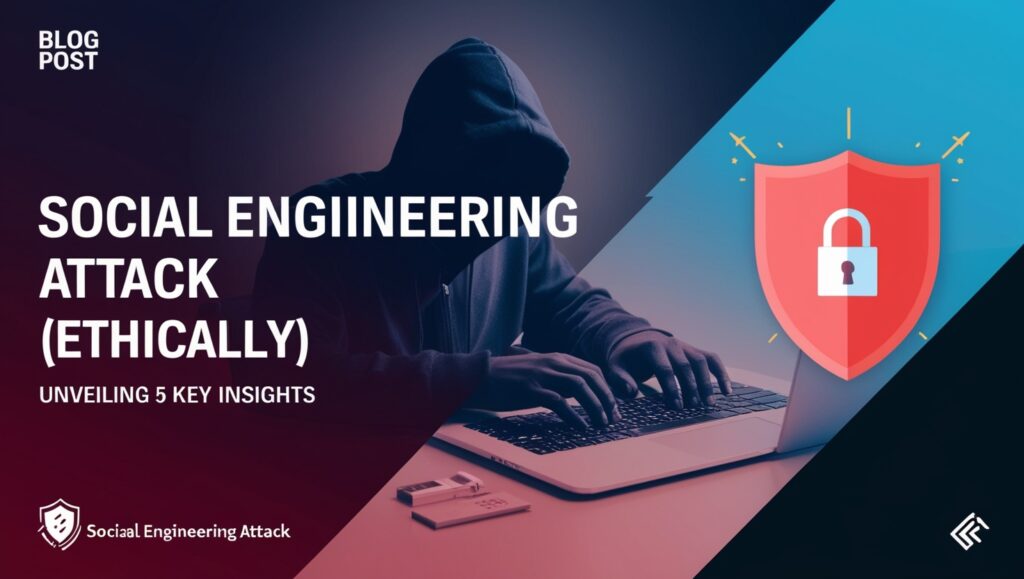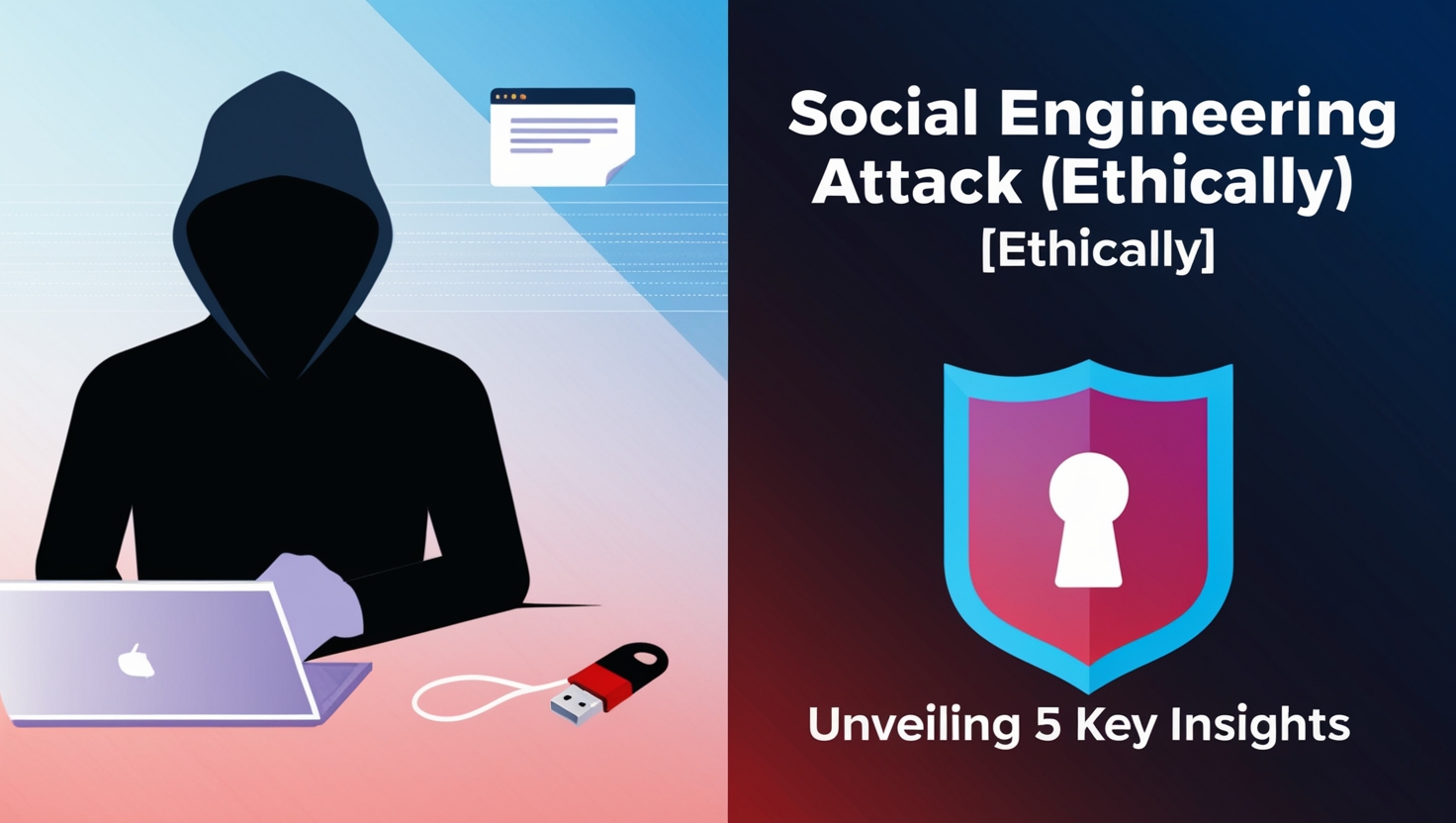Social engineering attacks are often seen as the dark art of hacking – tricking people into spilling secrets or clicking malicious links. But what if I told you there’s a flip side? A Social Engineering Attack (Ethically) turns this sneaky tactic into a force for good. Done with permission and purpose, it’s a way to test and strengthen security by exposing human vulnerabilities – without the harm. If you’re curious about how this works and why it’s a game-changer, you’re in the right place. Let’s dive into what makes an ethical social engineering attack tick, why it matters, and how you can pull it off responsibly.

1. What Does Ethical Social Engineering Really Mean?
Imagine you’re at work, and an email pops up from “IT Support” asking you to reset your password via a link. You click it, enter your details, and… nothing happens. Turns out, it was a test – a Social Engineering Attack (Ethically) designed to see if you’d fall for a phishing scam. That’s the essence of it: mimicking real-world manipulation tactics, but with consent and a goal to educate, not exploit.
- The Core Idea: Unlike its shady counterpart, an ethical social engineering attack is authorized. It’s typically part of a security audit or training program, where companies hire experts (or use internal teams) to probe weaknesses in human behavior.
- How It Differs: Malicious attackers want your data for profit or chaos. Ethical ones? They’re like friendly spies, reporting back to make you stronger.
- Real-Life Twist: Think of it as a fire drill for your brain – uncomfortable, maybe, but it prepares you for the real thing.
This isn’t about blame; it’s about understanding how easily we can be tricked – and fixing it.
2. Why Ethical Social Engineering Matters in Today’s World
Let’s face it: humans are the weakest link in any security chain. Cybercriminals know this, and they’re relentless. That’s why a Social Engineering Attack (Ethically) isn’t just a cool experiment – it’s a necessity.
- The Stakes Are High: Studies show over 90% of cyberattacks involve some form of social engineering. From fake CEO emails to USBs left in parking lots, these tricks cost businesses billions yearly.
- Real-World Wake-Up Call: Imagine a hospital staffer tricked into sharing login details, halting critical systems. Ethical tests catch these risks before disaster strikes.
- Building Resilience: By simulating attacks, companies learn where their people falter – and train them to spot red flags like urgency or odd requests.
In a world where one wrong click can unravel everything, ethical social engineering is like a vaccine – a small dose of the problem to prevent a full-blown outbreak.
3. How to Conduct an Ethical Social Engineering Attack
So, how do you actually run a Social Engineering Attack (Ethically)? It’s not about throwing chaos at people – it’s structured, legal, and surprisingly creative. Here’s the playbook:
- Step 1: Get Permission: This is non-negotiable. Secure written consent from the organization, outlining what’s fair game (e.g., emails, calls) and what’s off-limits.
- Step 2: Pick Your Method: Phishing emails are popular – craft one mimicking a legit source, linking to a safe page that logs clicks. Or try pretexting, like posing as a vendor needing “urgent” info.
- Step 3: Execute Safely: Keep it harmless. A baiting test might involve leaving a “Confidential Docs” USB in the break room, loaded with a tracking script – not malware.
- Step 4: Analyze and Report: Track who bites, then share a report with insights (e.g., “30% clicked the link”) and tips to improve.
I once heard of a team testing a bank by calling as “IT” to reset passwords. Half the staff complied without verifying – a goldmine of lessons, delivered ethically.
4. The Tools and Mindset of an Ethical Attacker
Pulling off a Social Engineering Attack (Ethically) doesn’t need a hacker hoodie or a dark room – it’s more about psychology than tech wizardry.
- Tools of the Trade: You might use email spoofing software (legally, of course) to fake sender addresses, or simple props like a branded lanyard for impersonation tests. Free tools like SET (Social-Engineer Toolkit) can help, too.
- The Mindset: Think like a con artist with a conscience. It’s about spotting patterns – who trusts too quickly? – and crafting believable stories.
- A Personal Spin: I’d argue curiosity is key. You’re not just testing; you’re unraveling how humans tick under pressure.
It’s less about gadgets and more about understanding trust – then using that knowledge for good.
5. Turning Weaknesses into Strengths: The Aftermath
The real magic of a Social Engineering Attack (Ethically) happens after the test. It’s not about pointing fingers; it’s about building a shield.
- Debrief and Educate: Show employees what happened – “Here’s the fake email you clicked” – and why it worked (e.g., urgency tricks the brain). Make it a lesson, not a lecture.
- Fix the Gaps: If 40% fell for a phishing test, roll out multi-factor authentication or stricter email filters.
- A Success Story: A friend’s company did this – post-test, their click rate dropped from 25% to 5% in months. That’s the payoff.
Weaknesses aren’t failures; they’re opportunities. Ethical attacks turn “oops” into “aha.”
6. FAQ Questions
Got questions about a Social Engineering Attack (Ethically)? Here are some common ones I’ve tackled:
- Is it legal?
Yes, if you have explicit permission. Without it, you’re crossing into illegal territory – ethics matter. - What if people get upset?
Transparency helps. Explain it’s a test to protect, not shame, them. Most appreciate the heads-up. - Can small businesses do this?
Absolutely! Even a simple phishing simulation with free tools can work wonders. - How often should you test?
Quarterly is a sweet spot – enough to keep skills sharp without overwhelming staff.
Still curious? Drop your own question – I’d love to dig deeper.
Wrapping It Up
A Social Engineering Attack (Ethically) might sound like an oxymoron, but it’s a powerful tool in the right hands. It’s about shining a light on our quirks – the way we trust, panic, or click without thinking – and using that to build smarter, tougher defenses. Whether you’re a business owner, an IT pro, or just someone who hates spam, understanding this process can change how you see security. So, next time you get a fishy email, pause – it might just be an ethical test. Or, better yet, the real deal you’re now ready to dodge.

Leave a Reply